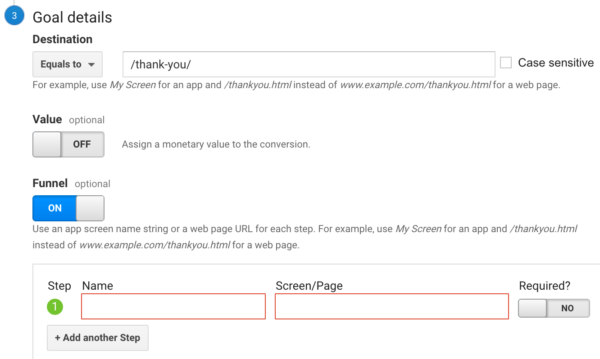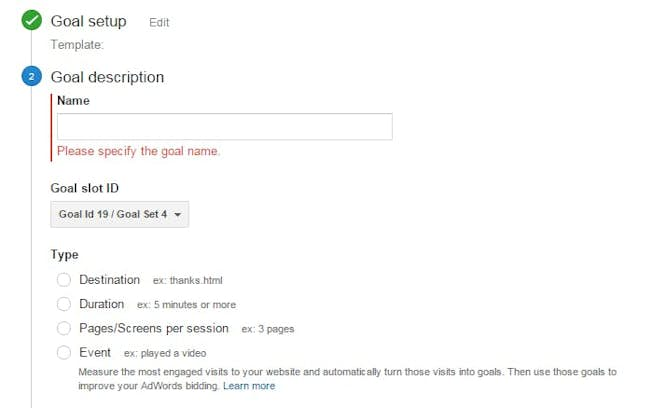Trick Insights on What Data Is Google Analytics Goals Unable to Track
Trick Insights on What Data Is Google Analytics Goals Unable to Track
Blog Article
Discover the Limitations of Google Analytics Goals: Revealing the Information Types That Remain Untrackable
As services significantly rely on data-driven decision-making, understanding the restrictions of tools like Google Analytics comes to be vital. While Google Analytics Goals offer valuable insights right into customer communications, there exist data types that avoid monitoring, positioning obstacles to a detailed understanding of user behavior. These untrackable information kinds increase inquiries concerning the precision and efficiency of the analytics information that companies heavily count upon for their digital methods. Interested to uncover the surprise unseen areas in your data evaluation procedure?
Incomplete Individual Journey Tracking
Insufficient user trip monitoring within Google Analytics can hinder the ability to precisely examine individual actions. When the user journey is not fully tracked, there are voids in the information that protect against a detailed understanding of exactly how customers connect with a site. This absence of understanding can bring about missed out on chances for optimization and enhancements to the customer experience.
One usual problem with insufficient customer trip tracking is the lack of ability to see the complete path that users take in the past finishing a goal or leaving the site. Without this info, it is challenging to identify where customers may be running into challenges or rubbing points that avoid them from converting. Furthermore, insufficient monitoring can cover the impact of specific marketing efforts or web site changes on individual habits.
To resolve this limitation, it is essential to set up correct tracking systems within Google Analytics to record the whole customer trip. This might involve establishing up occasion monitoring, objective funnels, or using devices like Google Tag Supervisor to guarantee that no crucial interactions go unrecorded. By getting a comprehensive view of the user trip, web site proprietors can make more informed decisions to improve individual involvement and drive conversions.
Acknowledgment Obstacles
Browsing through attribution challenges in Google Analytics requires a thorough understanding of how various touchpoints contribute to the total conversion process. Attribution obstacles occur from the intricacy of contemporary client journeys, where customers communicate with multiple networks before converting.
One common acknowledgment difficulty is the problem in attributing conversions to the right resource, particularly in situations where individuals interact with multiple networks prior to converting. This can lead to errors in establishing which marketing initiatives are driving one of the most conversions. Additionally, cross-device monitoring poses another acknowledgment difficulty, as customers frequently change between devices during their trip, making it challenging to track their interactions effortlessly. Marketers must very carefully evaluate and analyze attribution information to make enlightened choices and optimize their advertising and marketing methods successfully.
Offline Conversions
Provided the obstacles related to associating conversions accurately in online networks, the measurement of offline conversions provides a significant chance for marketers seeking an extra extensive understanding of their customers' trip. Offline conversions refer to activities that consumers take in the physical world, such as making acquisitions in brick-and-mortar shops or over the phone, attending events, or engaging with published materials - what data is google analytics goals unable to track. These conversions are important for organizations that run both online and offline, as they offer useful understandings right into the effectiveness of advertising and marketing projects throughout various touchpoints
Tracking offline conversions typically postured a significant challenge for marketing experts, as it was testing to link these actions back to details on-line interactions properly. With advancements in technology, such as the integration of CRM systems, special identifiers, and promo code codes, organizations can now connect the void between online and offline data to acquire a more holistic sight of consumer habits. By successfully determining offline conversions, marketing professionals can maximize their strategies, allocate sources much more effectively, and ultimately boost the general client experience.
Cross-Device Tracking
Cross-device tracking plays a crucial function in understanding the interconnected nature of customers' digital communications across numerous tools. In today's omnichannel world, where customers effortlessly switch between tablets, desktop computers, and smartphones, tracking their actions across these gadgets is important for online marketers to obtain a comprehensive view of their client journey.

Additionally, personal privacy issues and regulations such as GDPR and CCPA have better complicated cross-device my site monitoring. With users demanding more control over their data and boosted constraints on monitoring modern technologies, online marketers need to locate cutting-edge and privacy-compliant means to attach customer communications throughout gadgets.
Dynamic Material Involvement
Understanding customer involvement with vibrant material is pivotal in optimizing digital marketing methods for boosted target market interaction. Dynamic web content refers to website components that transform based upon click to read more customer habits, preferences, or other variables, supplying a tailored experience. Nevertheless, tracking individual interactions with dynamic web content presents challenges for typical analytics devices like Google Analytics.
While Google Analytics can track fundamental interactions like clicks and web page sights, it may struggle to record more nuanced involvements within vibrant web content. what data is google analytics goals unable to track. Metrics such as time invested in specific dynamic components, float actions, or communications within pop-ups are usually not conveniently measurable using standard monitoring techniques. This constraint hinders online marketers' ability to completely grasp how users are engaging with vibrant content and tailor their approaches appropriately

Final Thought
Finally, Google Analytics objectives have constraints in tracking insufficient YOURURL.com customer trips, attributing conversions precisely, catching offline conversions, tracking cross-device communications, and gauging dynamic content interaction. These restraints highlight the importance of exploring additional tracking methods and devices to gain a more comprehensive understanding of individual behavior and conversions beyond what Google Analytics can offer.
While Google Analytics Goals offer valuable insights right into individual communications, there exist information kinds that avoid tracking, positioning challenges to an extensive understanding of user behavior.Incomplete user trip monitoring within Google Analytics can hinder the ability to accurately assess user behavior. When the customer trip is not completely tracked, there are spaces in the information that stop a detailed understanding of exactly how users engage with a website.One common concern with incomplete user trip monitoring is the failure to see the complete course that users take in the past completing an objective or leaving the website. By acquiring a detailed view of the user journey, internet site owners can make even more educated choices to boost individual engagement and drive conversions.
Report this page